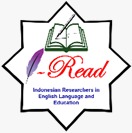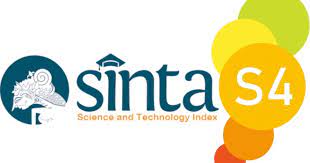The implementation of Canva as a digital learning tool in English learning at vocational school
DOI:
https://doi.org/10.22219/englie.v5i2.34839Keywords:
Canva, digital learning tool, implementationAbstract
This study aims to investigates the implementation of Canva as a digital learning tool at SMKN 1 Parit Tiga in West Bangka. Canva, a versatile graphic design platform, offers various features for creating visually appealing materials. This study used qualitative approach, using a case study design. It explores how Canva enhances teaching and learning processes, engages students, and improves learning outcomes in a vocational high school setting. The data collection was done through interviews, classroom observations, and document analysis. The data, then, were analyzed using thematic analysis. The research findings highlight the seamless integration of Canva into lesson planning, teachers' motivations for using Canva, and the positive impact on student engagement and creativity. The results indicated that Canva significantly increases student interest, engagement, and confidence, leading to enhanced creativity and understanding of topics. Recommendations include providing professional development opportunities for teachers and incorporating student feedback to optimize Canva's use in the classroom. Overall, the study underscores the promising results of integrating Canva into educational settings to enhance student motivation, creativity, and collaboration.
Downloads
References
Andriani, K. (2022). Teaching media in EFL classrooms: what are they and why select them. Journal of Language Testing and Assessment, 2(1), 87–97. https://doi.org/10.56983/jlta.v2i1.214
Andriyanti, F., Pratiwi, D., & Yunda, D. (2023). Improving students’ writing skills through canva application at SMP Muhammadiayh Imogiri Yogyakarta. International Journal of Contemporary Studies in Education, 02(02), 119–126. https://doi.org/10.30880/ijcse.v2i2.416
Apsari, T. M., Wachyudi, K., & Mobit, M. (2022). Vocational high school students’ challenges in practicing English speaking skills. JADEs Journal of Academia in English Educations, 3(2), 206–222. https://doi.org/10.32505/jades.v3i2/5009
Aryawan, F. N. (2023). Overcoming the challenges of vocational education in Indonesian SMK: Ideas on curriculum improvement, teaching quality, and English language teaching. Journal of Practice Learning and Educational Development, 3(3), 243–252. https://doi.org/10.58737/jpled.v3i3.226
Atmaja, L. H. (2021). Using Canva to Teach Student Creativity in Writing Skill during the Pandemic. 7th ELTT Conference, 7, 2579–437.
Candra, R. M. A., Chandra, N. E., & Hidayat, F. (2022). The use of canva application in creative writing course: Students’ perceptions. The 1st International Conference on Language and Language Teaching (InCoLLT). https://doi.org/10.26740/jomp.v3n2.p114-120
Creswell, J. W. , & Plano Clark, V. L. . (2018). Qualitative, quantitative, and mixed methods approaches (4th ed.). SAGE Publications.
Edmonds, W. Alex., & Kennedy, T. D. . (2017). An applied guide to research designs : quantitative, qualitative, and mixed methods. SAGE.
Fauhan, I. P., & Jumardi. (2023). Utilization of the canva application on the Belajar.Id site as a learning media at SMK Bina Nusa Mandiri Jakarta. Jurnal Inovasi Teknologi Pendidikan, 10(4). http://dx.doi.org/10.21831/jitp.v10i4.63299
Firdayanti, Emiliyana, P.M., Fitriah, S., & Kurniati, U. (2024). Teacher and student’s pedagogical tasks using canva as media for English Language Teaching (ELT) in developing creativity for high school. International Journal of English Language Studies. https://doi.org/http://dx.doi.org/10.32996/ijels.2024.6.2.19
Fitria, T. N. (2022). Using Canva as media for english language teaching (elt) in developing creativity for informatics students’. ELT Echo: The Journal of English Language Teaching in Foreign Language Context, 7(1), Article 1. https://doi.org/10.24235/eltecho.v7i1.10789
Flick, U. (2018). The SAGE handbook of qualitative data collection (Issue SAGE Publications). https://doi.org/https://doi.org/10.4135/9781526416070
Husna, A., & Suryana, B. (2017). Metodologi penelitian dan statistik. P2M2.
Kemdikbud. (2014). Buku Guru Bahasa Inggris MA/ MAK Kelas XI. Balitbang Kemdikbud.
Long, J., & Clark, S. (2022). Top features: Canva for education. TCEA. Retrived from Https://Blog.Tcea.Org/Top-Features-Canva-for-Education/.
Mafiroh, R., Agustina, S., Megawati, F., & Phumpanit, Y. (2024). Cooperative learning using canva to boost speaking cctivities in a primary school. JOLLT Journal of Languages and Language Teaching, 12(2), 723–737. https://doi.org/10.33394/jollt.v%vi%i.10455
Maria, B., Februati, N., & Yuliatin, U. (2023). Utilizing canva platform to improve students’ achievement in English learning and teaching. Journal of English for Academic and Specific Purposes, 6, 58–67. https://doi.org/https://doi.org/10.18860/jeasp.v6i2.24179
Muhajir, M., Sarwendah, A., & Ibrahim, A. B. (2024). Utilization of canva for education to improve learning effectiveness of vocational students. https://doi.org/10.22219/raden.v4i1.328
Ngoc, N. T. B., & Huyen, P. K. (2023). Using Canva Platform In Designing English Lessons To Increase Students Learning Motivation. International Journal of Scientific and Research Publications, 13(4). https://doi.org/10.29322/ijsrp.13.04.2023.p13623
Pedroso, J. E. P., Sulleza, R. V. S. , F. K. H. M. C., Noman, A. J. O., & Martinez, C. A. V. (2023). Students’ views on using canva as an all-in-one tool for creativity and collaboration. Journal of Digital Learning and Distance Education, 2(2). https://doi.org/10.56778/jdlde.v2i1.117
Pedroso, J. E., Sulleza, R. S., Francisco, K. H. M. C., Noman, A. J. O., & Martinez, C. A. V. (2023). Unlocking the Power of Canva: Students’ Views on Using the All-In-One Tool for Creativity and Collaboration. Journal Of Digital Learning And Distance Education, 2(2), Article 2. https://doi.org/10.56778/jdlde.v2i2.117
Putri, A., Arrasuli, B. A., & Adelia, P. (2020). Media pembelajaran audio visual berbasis canva. Journal Pendidikan Ekonomi Undhiksa, 12(02).
Rahmadhani, S., Ahyanuardi, & Suryati, L. (2022). Vocational high school students’ competency needs to the world of work. Mimbar Ilmu, 27(2), 349–355. https://doi.org/10.23887/mi.v27i1.42161
Rais, R., & Zulfa, I. (2024). The influence of the canva application in improving primary school student achievement in West Sumatra. Journal of Social Science Utilizing Technology, 2(1), 362–374. https://doi.org/10.55849/jssut.v2i1.813
Richards, L. (2020). Handling qualitative data: A practical guide (3rd ed.). SAGE Publications, Inc.
Roistika, N. (2021). English teaching media during pandemic. 374–378. https://doi.org/10.2991/assehr.k.210427.057
Rosenbaum, P. R. (2017). Observation and experiment: An introduction to causal inference. Harvard University Press.
Salminawati, Mayang, S., & Syafii, M. (2023). The impact of using canva as media in teaching natural science field to the fifth grade students of SD Negeri Pucok Lupu, Pidie. The 1st International Conference on Education, Science Technology and Health (ICONESTH). https://doi.org/10.46244/iconesth.vi.145
Santoso, H. A., Istiqomah, N. R., & Santoso, D. (2022). Using canva to create visual materials in mathematics education. Journal of Mathematical Pedagogy, 3(2), 114–120. https://doi.org/10.26740/jomp.v3n2.p114-120
Santiana, S., Silvani, D., & Ruslan, R. (2021). Optimizing LMS Canvas for interactive online learning perceived by the students. Journal of English Education and Teaching, 5(4), Article 4. https://doi.org/10.33369/jeet.5.4.529-543
Shalawati, S., Astuti, M. T., Hidayati, A. N., & Hadijah, S. (2022). Designing and developing video as an instructional media in English language teaching setting. Lectura : Jurnal Pendidikan, 13(2), 192–205. https://doi.org/10.31849/lectura.v13i2.10185
Soerjasih, I., Kinasih, S. E., & Haryono, T. J. S. (2017). Penelitian kualitatif. In Pusat Pengembangan dan Pemberdayaan Pendidik dan Tenaga Kependidikan Pendidikan Kewarganegaraan dan Ilmu Pengetahuan Sosial, Direktorat Jenderal Guru dan Tenaga Kependidikan. (Revisi). Direktorat Jenderal Guru dan Tenaga Kependidikan: Kementerian Pendidikan dan Kebudayaan.
Sugiani, N. (2023). The implementation of canva as a media for learning English at SMK negeri 2 Singaraja. https://doi.org/https://doi.org/10.33650/ijoeel.v5i1.5482
Supratiknya, A. (2015). Metodologi penelitian kuantitatif & kualitatif dalam psikologi. Universitas Sanata Dharma.
Taylor, S. J., Bogdan, R., & DeVault, M. L. (2016). Introduction to qualitative research methods: A guidebook and resource (4th ed.). John Wiley & Sons, Inc.
Wulandari, H. (2020). Strategies in teaching speaking used by teachers of young, junior high school, senior high school, and university students. E-Structural (English Studies on Translation, Culture, Literature, and Linguistics), 3(02), Article 02. https://doi.org/10.33633/es.v3i02.4225
Yin, R. K. (2018). Case study research and applications (6th ed.). SAGE Publications, Inc.
Zahroh, A., & Febrianingrum, L. (2023). Students’ perception of the use of infographics at Canva application in accomplishing TOEFL class assignment. INSANIA: Jurnal Pemikiran Alternatif Kependidikan. (2024). https://ejournal.uinsaizu.ac.id/index.php/insania/article/view/8499
Zebua, N. (2023). Potensi aplikasi canva sebagai media pembelajaran praktis bagi guru dan peserta didik. Educativo: Journal Pendidikan, 2(1), 229–234. https://doi.org/10.56248/educativo.v2i1.127
Downloads
Published
How to Cite
Issue
Section
License
Copyright (c) 2024 Sugiarni, S. et al.

This work is licensed under a Creative Commons Attribution-ShareAlike 4.0 International License.
Authors who publish with English Learning Innovation (englie) agree to the following terms:
- For all articles published in English Learning Innovation (englie), copyright is retained by the authors. Authors give permission to the publisher to announce the work with conditions. When the manuscript is accepted for publication, the authors agree to automatic transfer of the publishing right to the publisher.
- Authors retain copyright and grant the journal right of first publication with the work simultaneously licensed under a Creative Commons Attribution-ShareAlike 4.0 International License that allows others to share the work with an acknowledgement of the work's authorship and initial publication in this journal.
- Authors are able to enter into separate, additional contractual arrangements for the non-exclusive distribution of the journal's published version of the work (e.g., post it to an institutional repository or publish it in a book), with an acknowledgment of its initial publication in this journal.
- Authors are permitted and encouraged to post their work online (e.g., in institutional repositories or on their website) prior to and during the submission process, as it can lead to productive exchanges, as well as earlier and greater citation of published work (See The Effect of Open Access).
This work is licensed under a Creative Commons Attribution-ShareAlike 4.0 International License.
















1.png)












